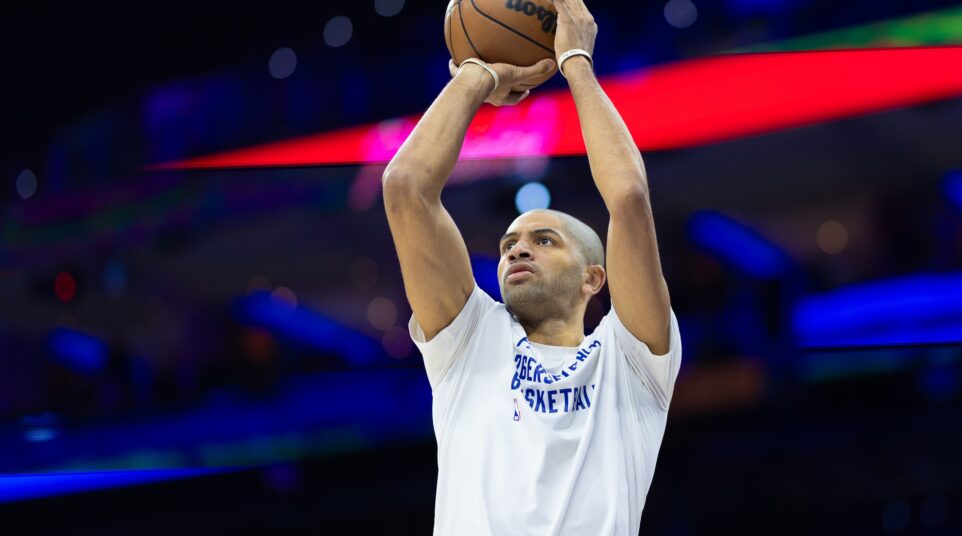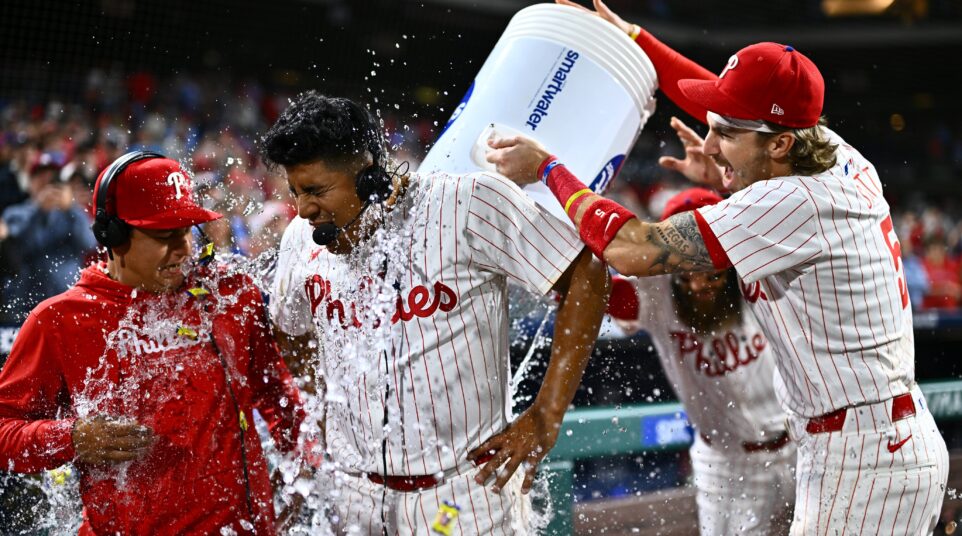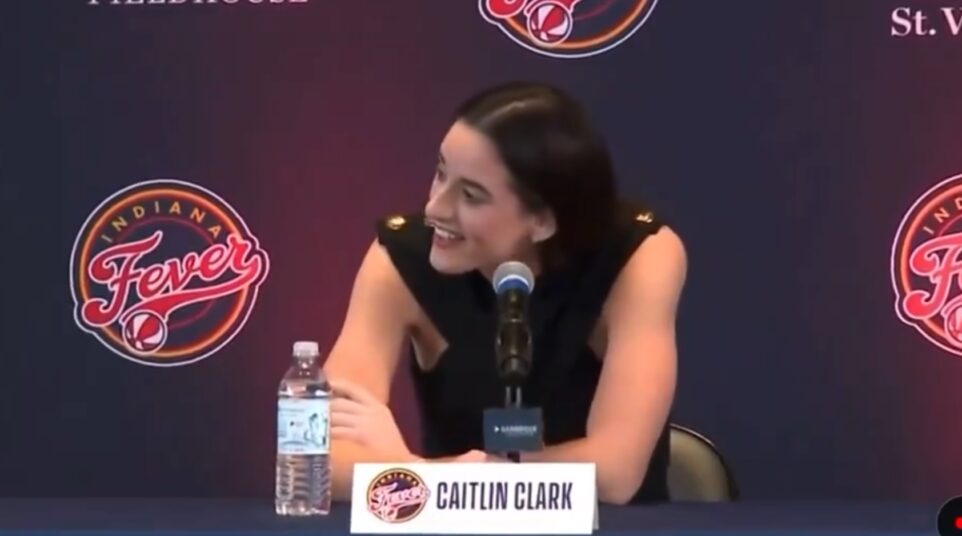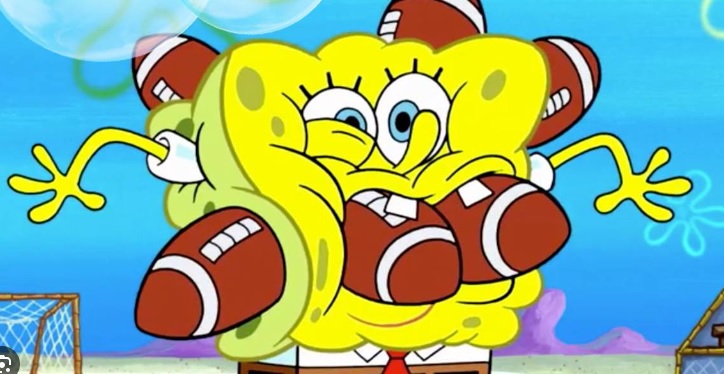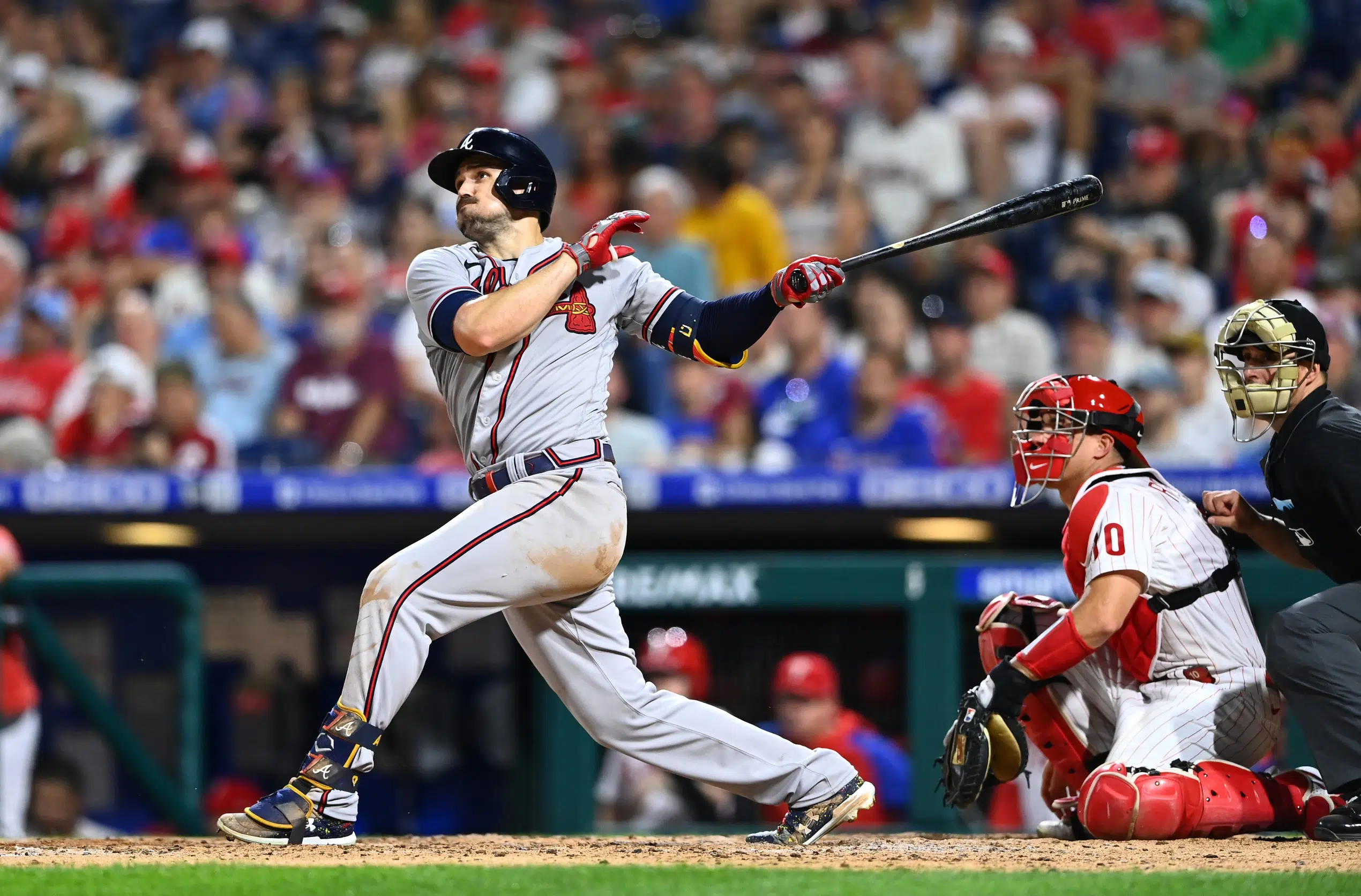
Latest Loss Shows Phillies' Struggles With Adjusting to New Reality
Once it was confirmed that Bryce Harper suffered a broken left thumb against the Padres last Saturday, the Phillies and, well, pretty much everyone began to ponder an essential question:
How the hell is this team going to survive without him?
Everybody knows replacing elite-level production is a virtually impossible task. Matching Harper’s offensive numbers isn’t going to happen. Still, such a handsomely paid roster has to have some possible way through this challenge, right?
One possible path to survival includes established players like Nick Castellanos and J.T. Realmuto “stepping up.” Another requires better execution. Doing the little things right.
On Wednesday night, a night after the Phillies went 1-for-10 with runners in scoring position, they turned to Triple-A slugger Darick Hall in their latest effort to jolt a clearly diminished middle of the order.
The move not only failed to provide the desired effect offensively, but the Phillies’ sudden need to compensate for a lack of punch at the plate also had a ripple effect defensively.
A lineup that failed to generate much pressure also failed to cash in on its only true scoring threat of consequence. The defense also failed to do the little things well, wasting a stellar start from Ranger Suarez in a quiet 4-1 loss to the Braves.
Along with the Phillies’ general lack of offensive production, this game was ultimately decided by two key sequences.
Exhibit “A”
The scuffling Mickey Moniak came to the plate in the second inning with the bases loaded and two down. The outcome felt predictable. Moniak struck out, stranding three runners. After a hitless night in three at-bats, his average dipped to .129.
He has yet to produce an extra-base hit this season. Worse yet, he has struck out in 14 of his 31 at-bats.
The Phillies are now 2 for 22 (.091) with the bases loaded and two outs this season.
https://t.co/p9ttHjqyNl— Bob Wankel (@BobWankelCB) June 29, 2022
That the Phillies must turn to Moniak in the midst of an important six-game stretch against two National League postseason contenders is a problem. Though he impressed in spring training and during his most recent stint at Triple-A, expecting Moniak to produce in a big spot at the major league level increasingly feels like an unreasonable ask right now.
After the game, I asked Phillies interim manager Rob Thomson about the balancing act of giving Moniak a fair shake while he endures such significant struggles. Here’s his response:
I think it’s a day-by-day thing, you know? You look at matchups and you look at are we giving him a chance on a daily basis. Just monitor the at-bats and monitor his temperament and mood. But he’s upbeat, says he feels good, says he feels confident. We think he’s going to produce at some point.
The Phillies could opt to play Matt Vierling more against right-handed pitching. They could again turn to the ice-cold Odúbel Herrera, who’s in the midst of a 2-for-33 slump. Or, they could let Moniak continue to work through his struggles.
All three options are less than ideal, but this is the Phillies’ new reality, and they must find a way to navigate it.
Exhibit “B”
With runners at the corners and one down in the fourth inning, Atlanta’s William Contreras delivered a game-tying single, but the key to the play was what happened with trail runner Marcell Ozuna.
With Hall in the lineup as the designated hitter, Castellanos found himself back in right field. He attacked Contreras’ single, meeting the baseball at medium depth in right field. Ozuna was only square on second base by the time Castellanos fielded the ball, yet he didn’t hesitate to gamble for third base.
https://twitter.com/BrodesMedia/status/1542299566892109827?s=20&t=NYgiA4WDo5bllg9PqTm3Jg
Not only did Ozuna reach third safely, he did so on a totally non-competitive play. The no-brainer decision to try for third on what should have been a dangerous move speaks volumes about how opposing teams view Castellanos’ arm in right field.
The first-to-third would be costly, too.
The Phillies then failed to turn what initially appeared to be an inning-ending double play, allowing the eventual winning run to cross the plate.
https://twitter.com/BrodesMedia/status/1542300401675927557?s=20&t=NYgiA4WDo5bllg9PqTm3Jg
For good measure, the Phillies gifted the Braves an additional insurance run in the seventh inning when reliever José Alvarado entered the game and promptly delivered a wild pitch that moved Atlanta’s Phil Gosselin into scoring position.
A few pitches later, Gosselin would score on an RBI single that made it 4-1.
On most nights, particularly against baseball’s better teams, the Phillies won’t be able to pound opponents into submission. They will need to make the most of scoring opportunities. They can ill afford to give away extra outs or extra bases because a lineup that was constructed to compensate for such mistakes can no longer do so.
After two inspiring wins over the Padres that came in the immediate wake of Harper’s absence, most of the initial optimism has dimmed.
Two losses will do that, but the fading optimism probably has as much to do with how the Phillies arrived at each loss.
Two quality starting pitching performances were rendered irrelevant by an offense that looks wholly reliant on Kyle Schwarber and Rhys Hoskins to do something.
This, too, is the Phillies’ current reality, and they must find a way to navigate it.
That’s Crazy, Man
And what about Castellanos, whose struggles continue to persist following an outlier four-hit effort to start the week?
The drop-off in his 2022 numbers is just crazy. I can’t think of a better word.
After being held hitless in four at-bats Wednesday night, Castellanos is hitting just .245 with a .674 OPS. Uninspiring as these numbers are, they don’t really tell the story of his season.
Nick Castellanos is now down to a .245/.298/.376 slash line. He ranks 157 out of 158 qualified players in WAR.
— Joe Giglio (@JoeGiglioSports) June 30, 2022
While Castellanos has experienced a decline in almost all key offensive statistics, a deeper dive into his lack of production shows some eye-popping trends:
- Last season, Castellanos hit .376 against the fastball, slugging an obscene .677 against the pitch. He entered play Wednesday night hitting just .270 against fastballs this season, slugging only .437. In other words, that’s essentially a 35 percent drop in slugging percentage.
- He’s also not doing as much damage when he elevates the baseball. His home run to fly ball ratio sits at 9.1 percent this season, which pales in comparison to his 23.7 percent ratio in 2020 and 22.8 percent in 2021. His current ratio also sits considerably below his 13.8 percent career mark.
- It probably feels difficult to remember, but Castellanos hit .300 with an .849 OPS in April. Since May 1, however, he’s just 47-for-210 (.224) while hovering around a .600 OPS.
- Since the calendar turned to May, Castellanos has produced just four homers and 12 doubles for a total of 16 extra-base hits. This season, he is averaging an extra-base hit every 13.13 plate appearances. For his career, he is averaging an extra-base hit every 9.48 plate appearances.
- Sometimes poor production can be explained by outliers and poor luck, but that doesn’t seem to be the case here. Not only has he struck out at a more frequent rate, but a year after producing a 46.9 hard hit percentage, he currently sits at 36.7 percent. That’s his lowest dating back to his rookie season in 2015.
Castellanos’ lengthy and impressive track record suggests at least a modest rebound lies ahead, and for the Phillies, it better come soon.
Their ability to adapt to this new reality likely depends on it.


